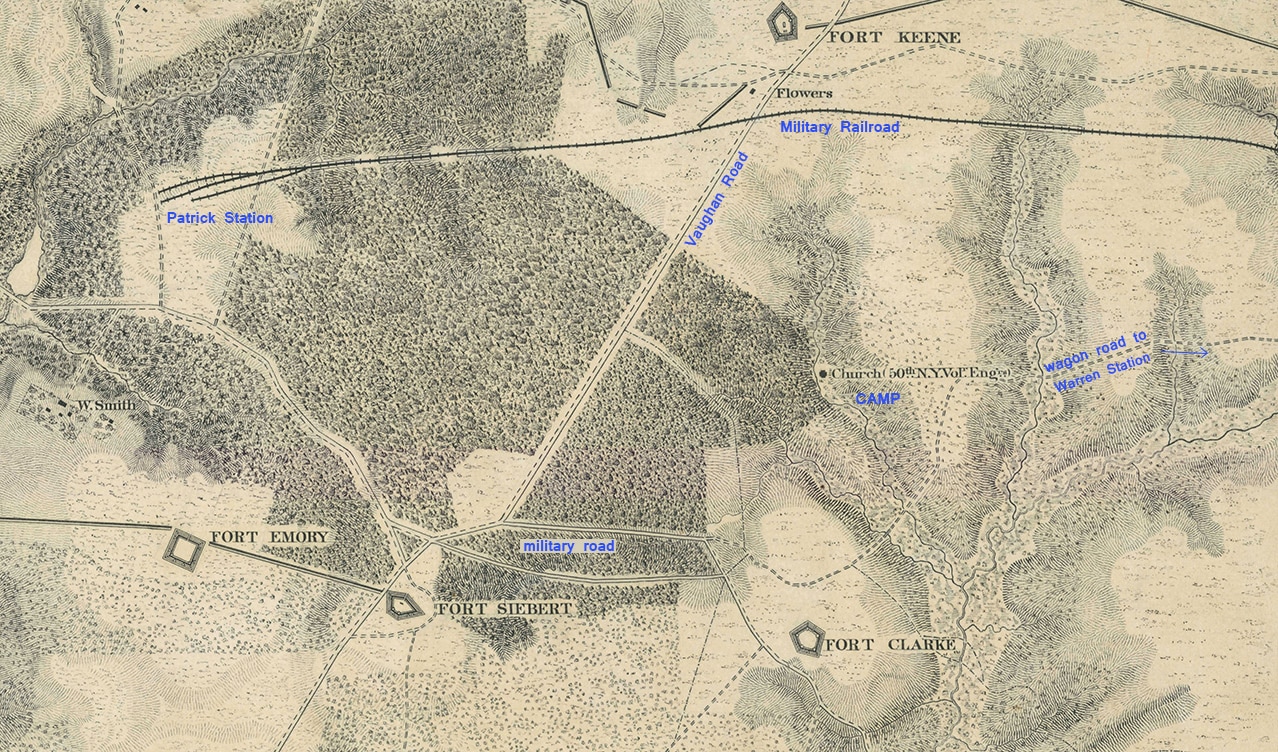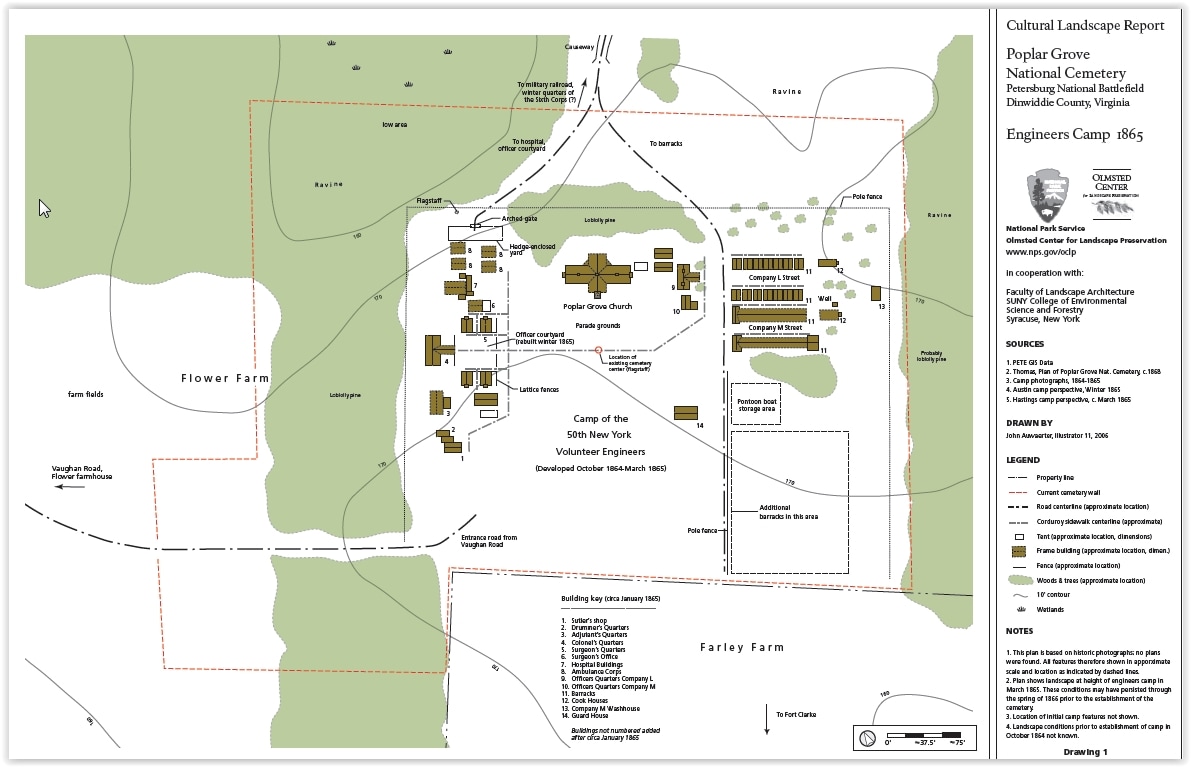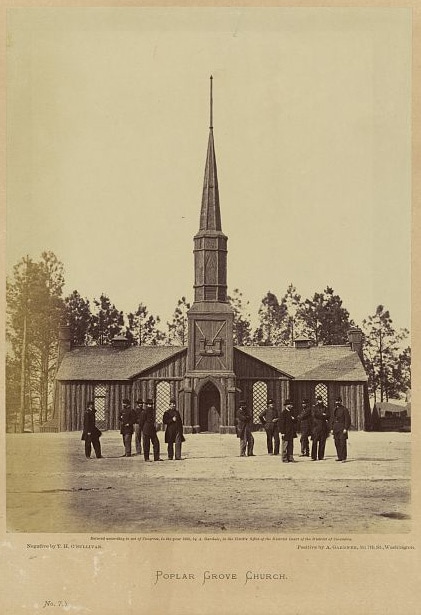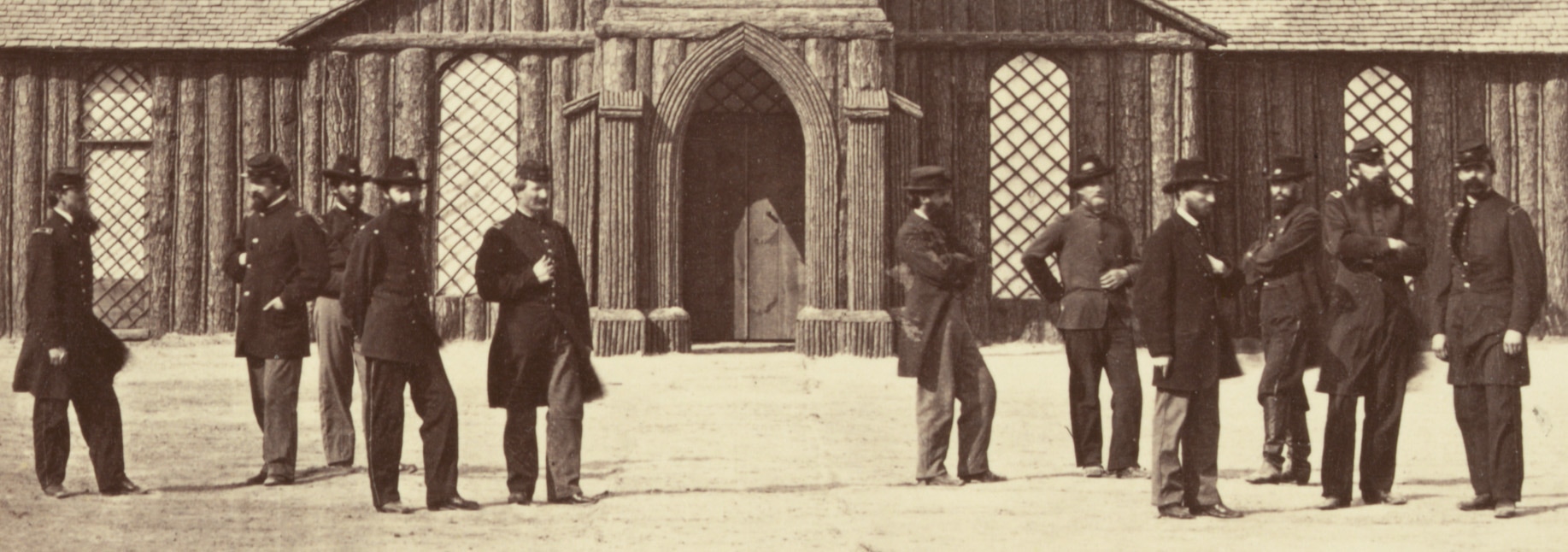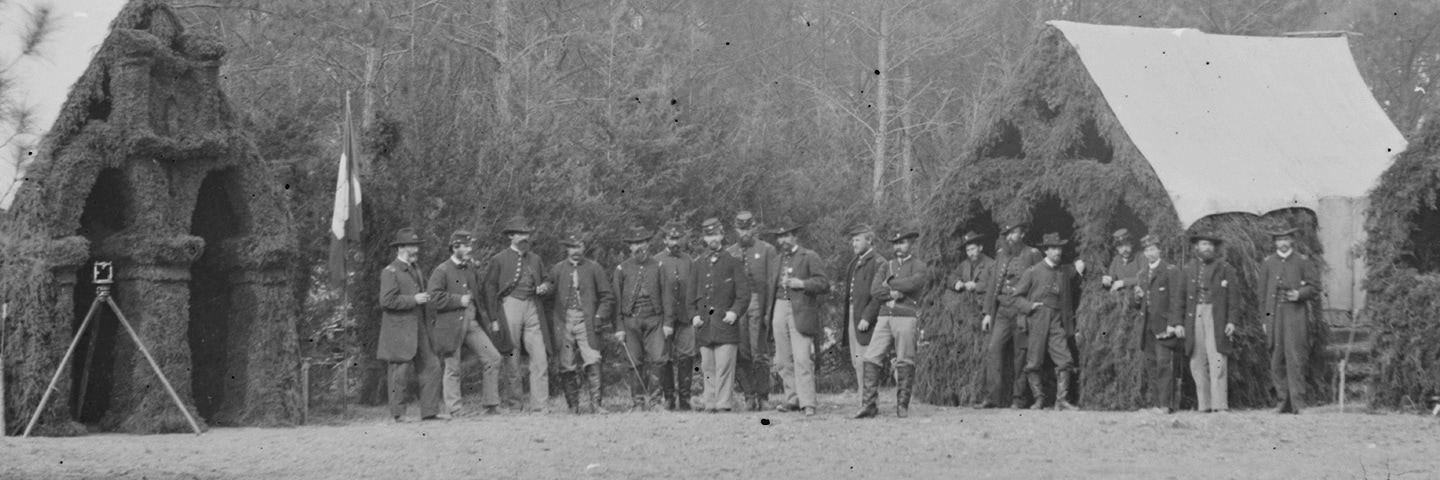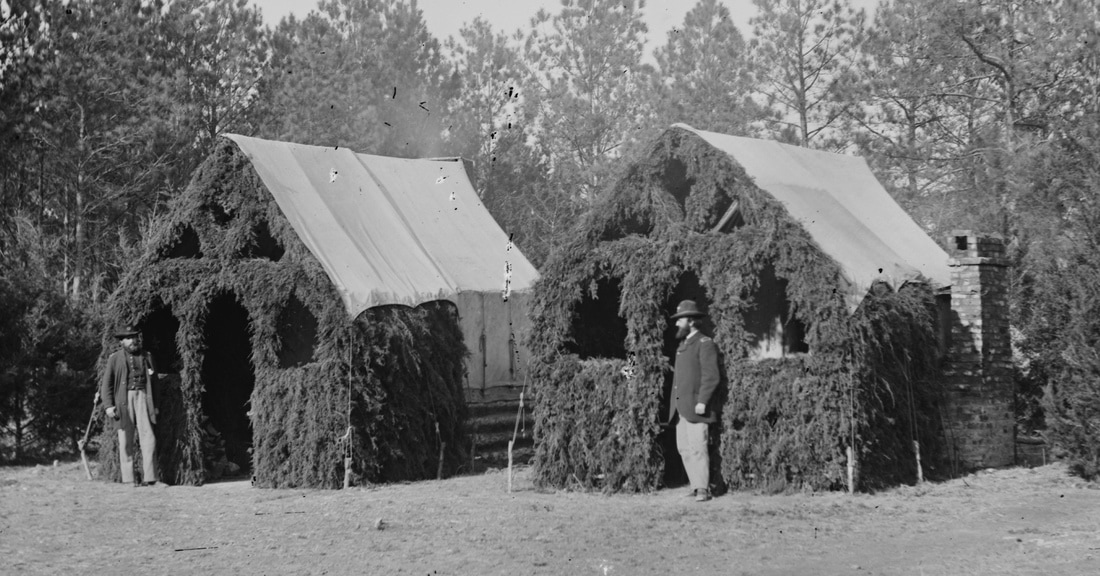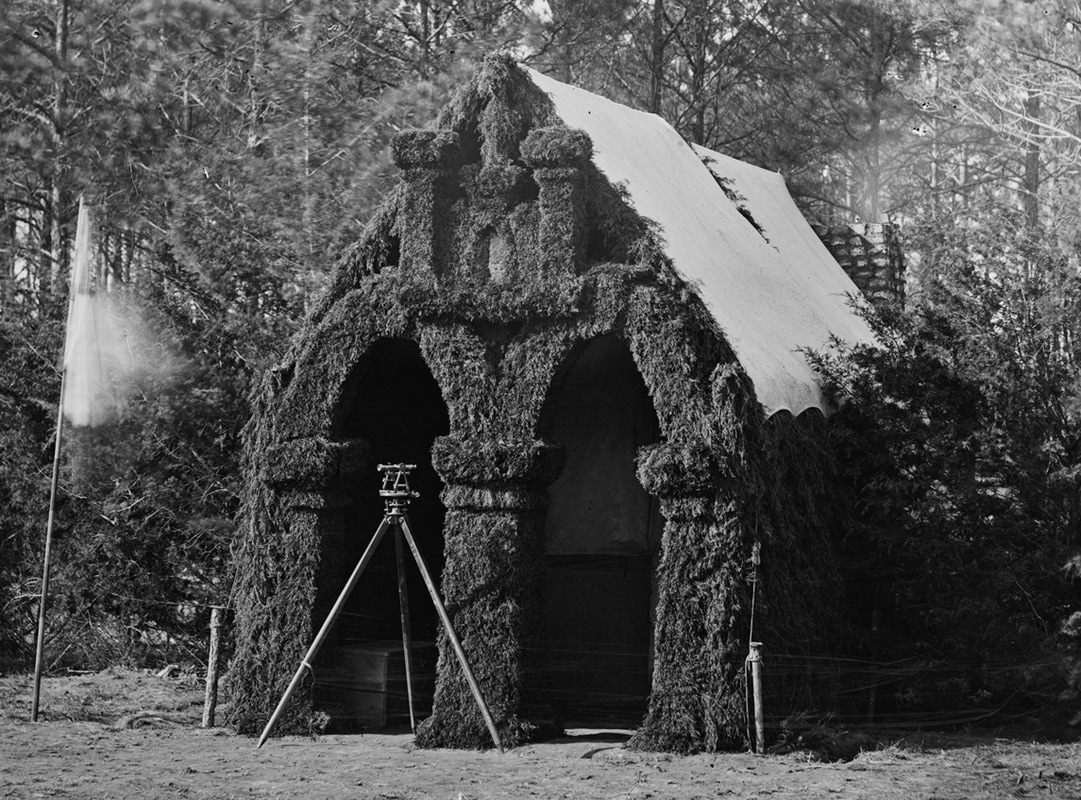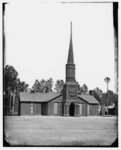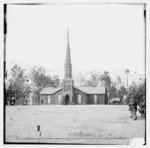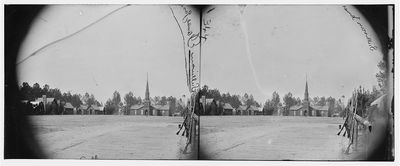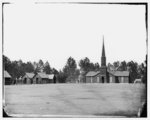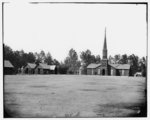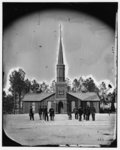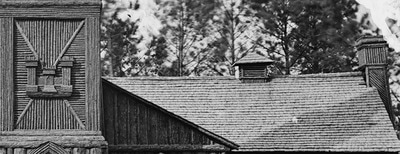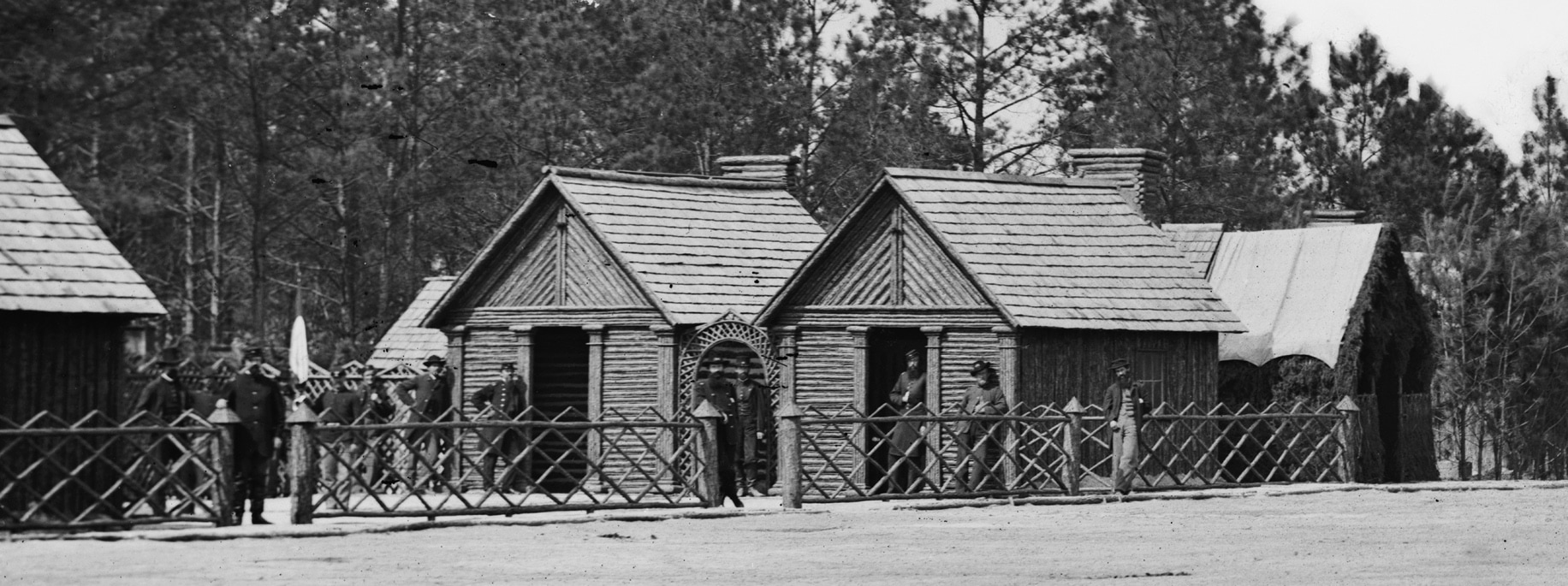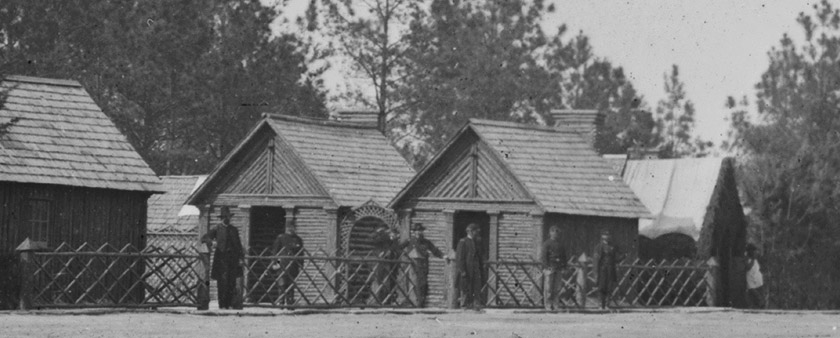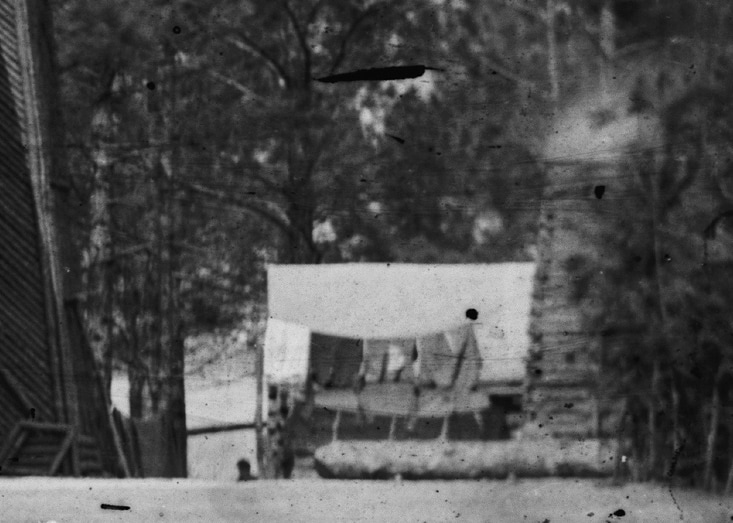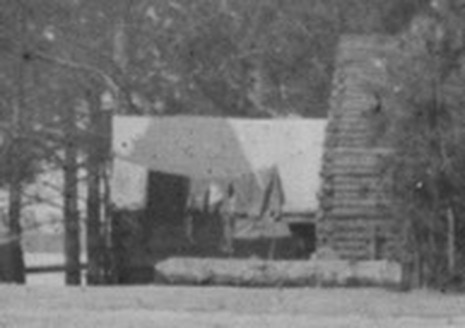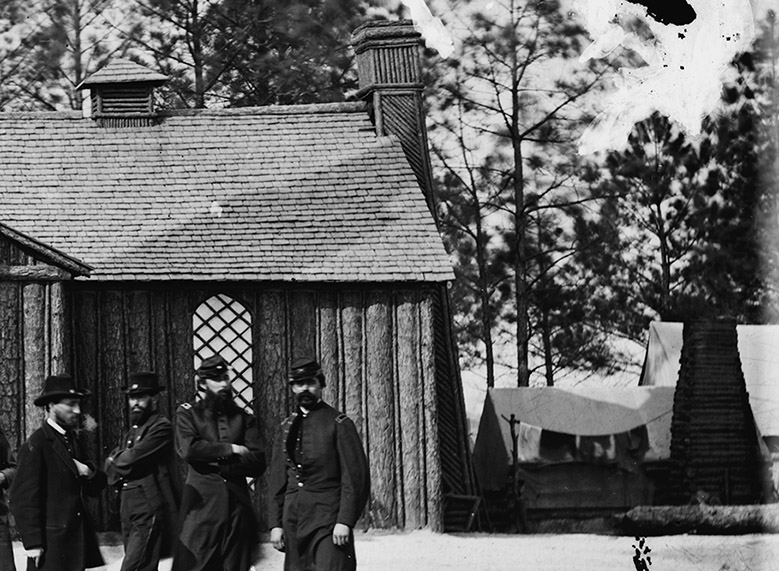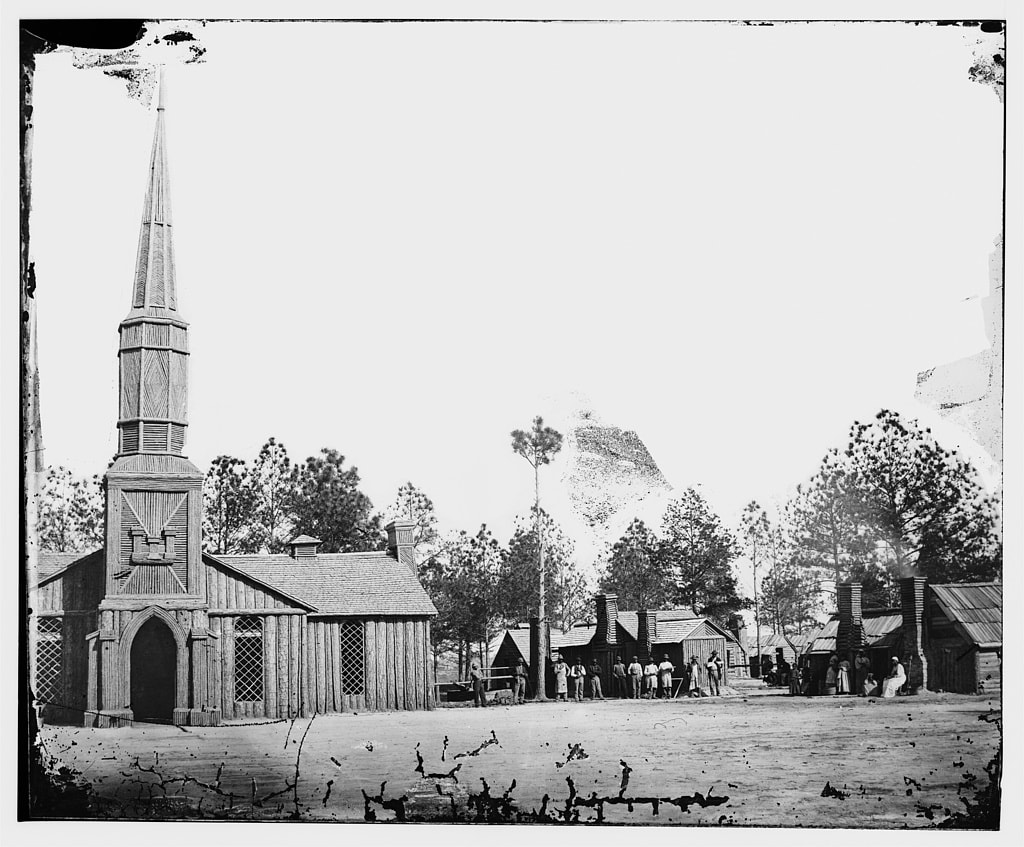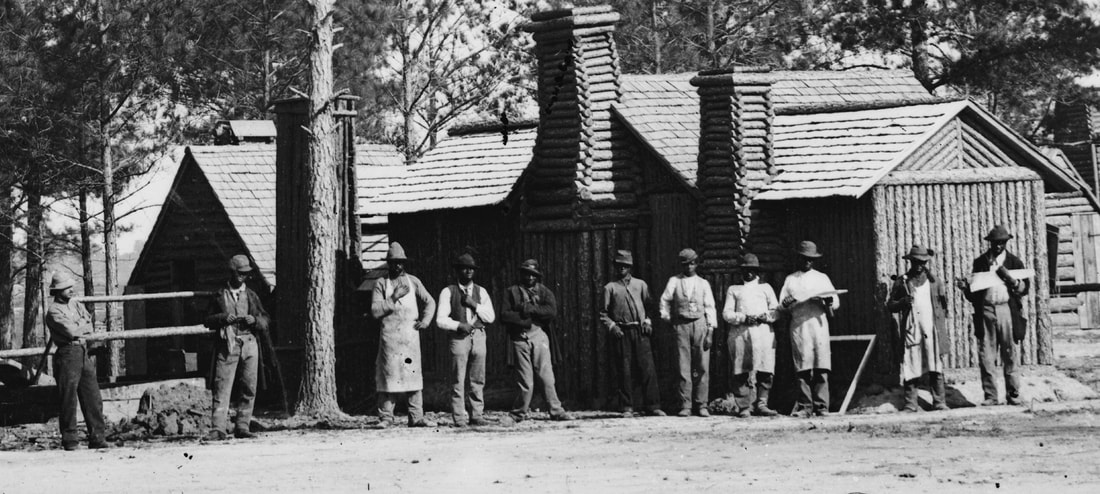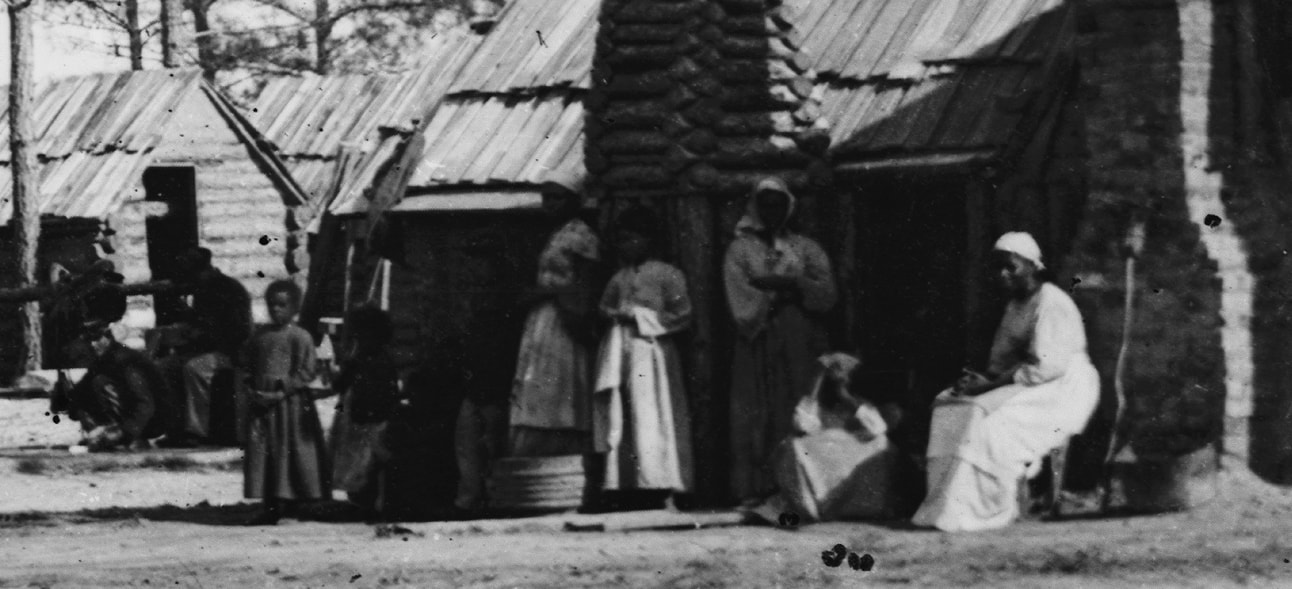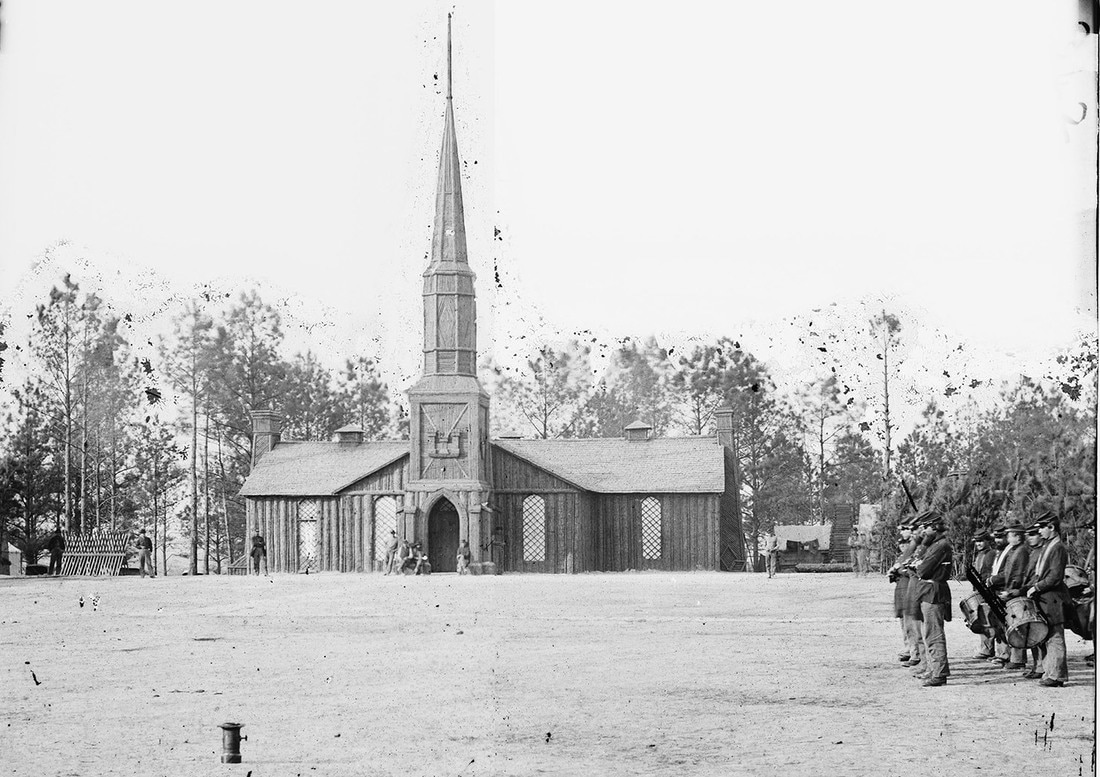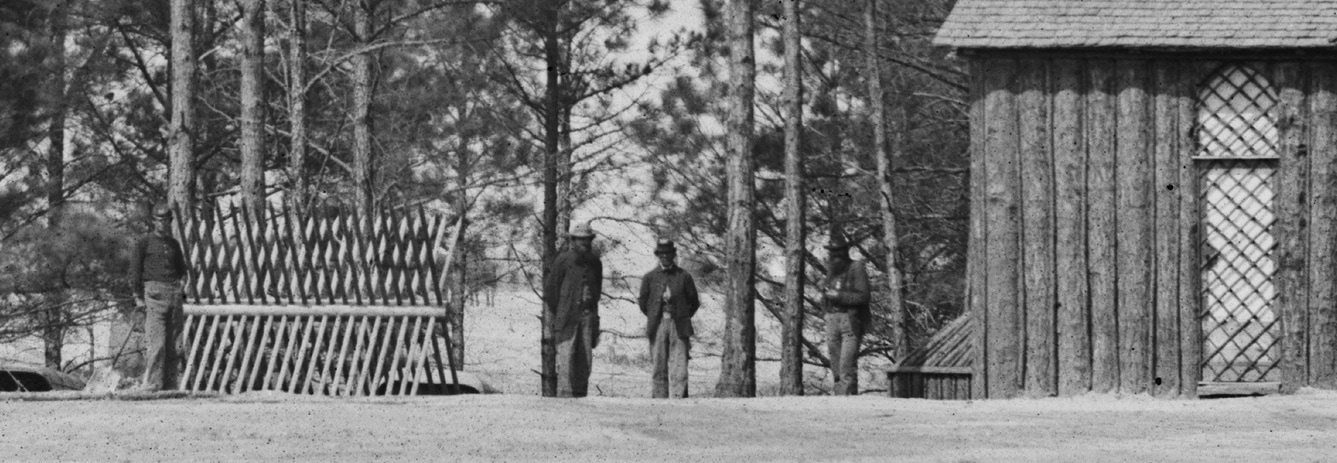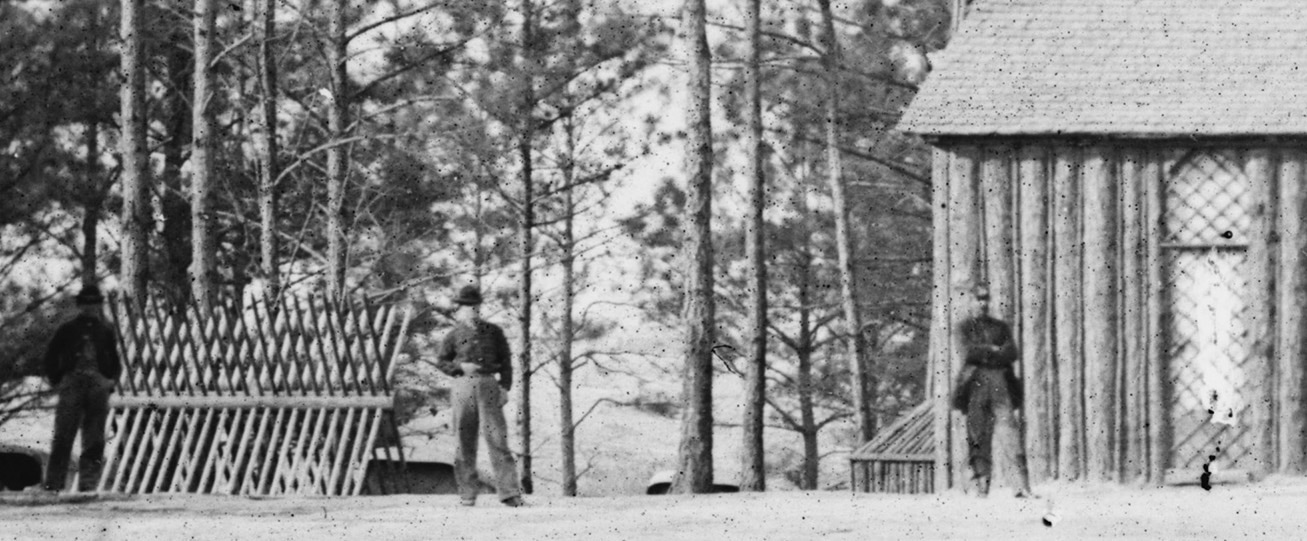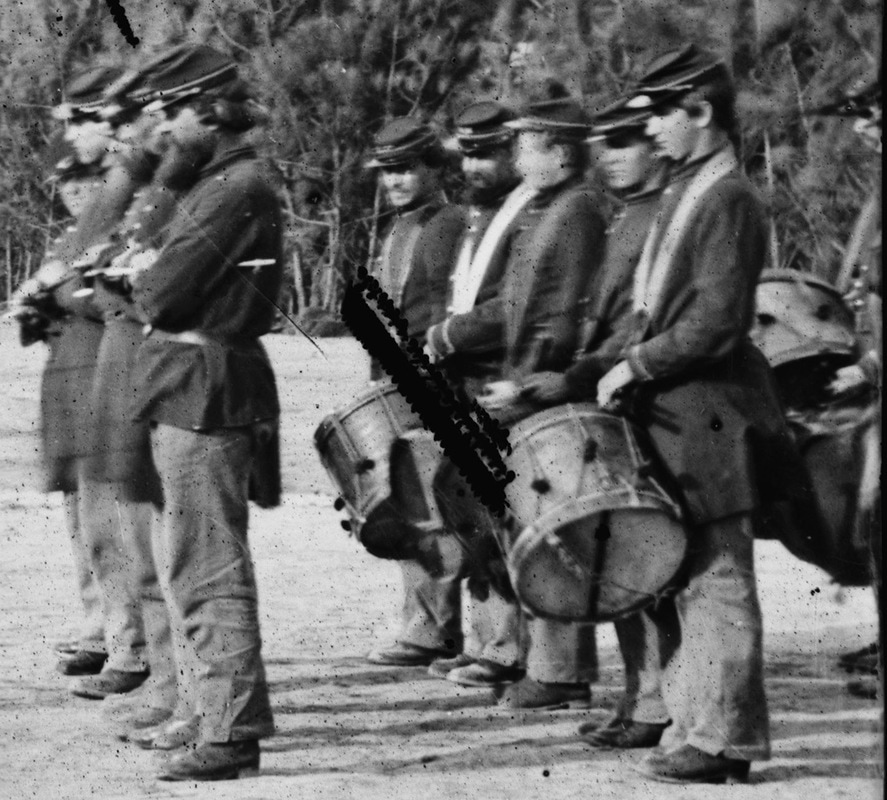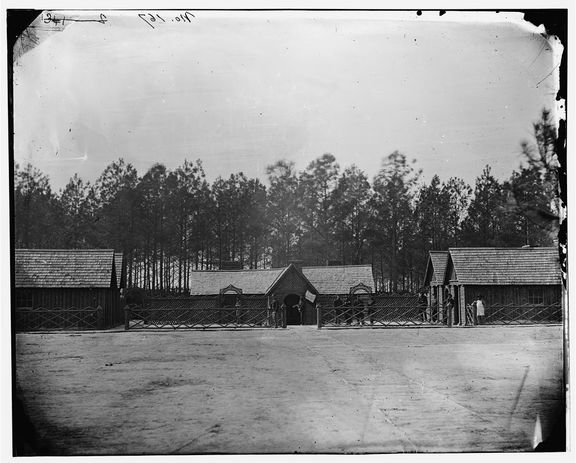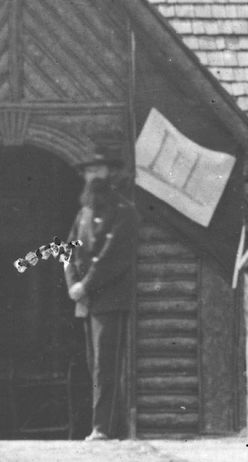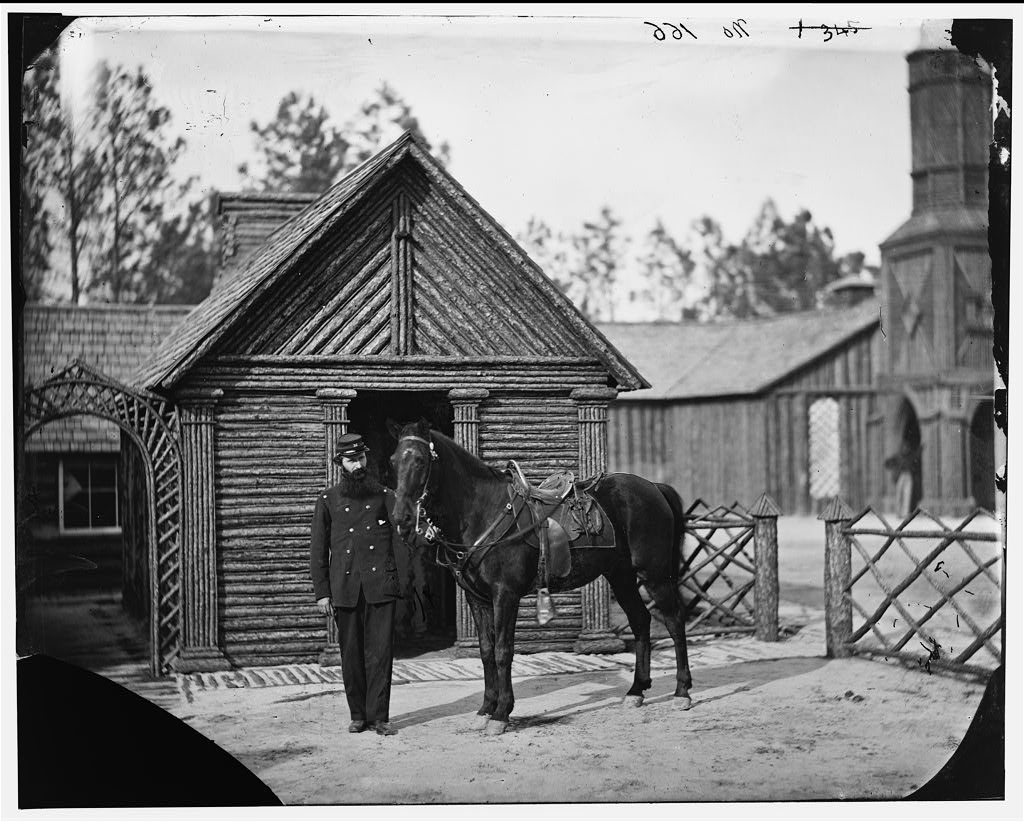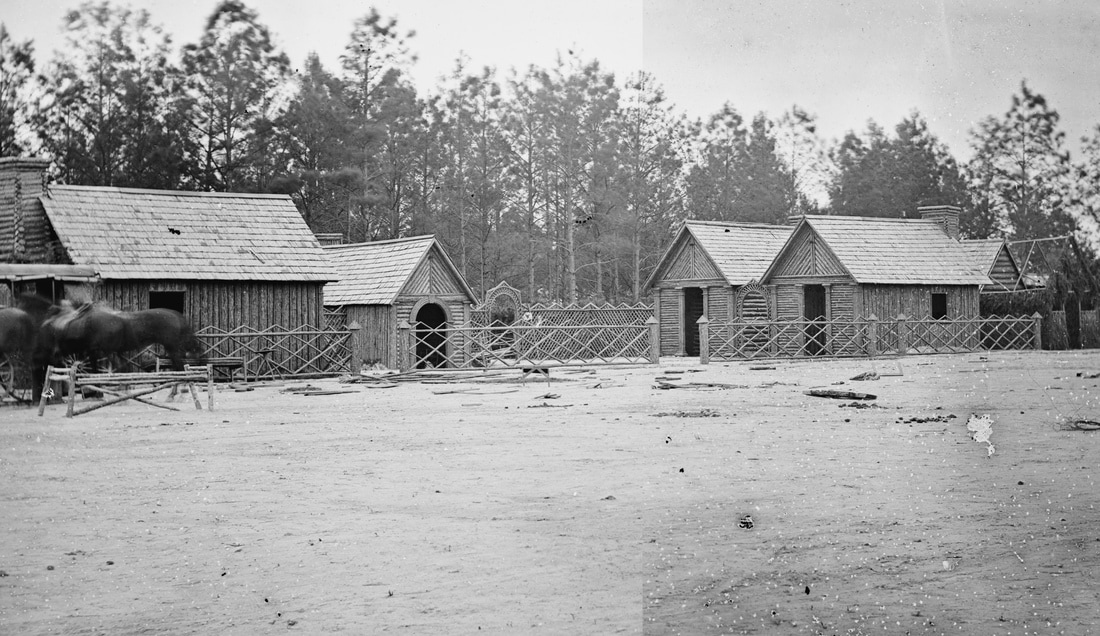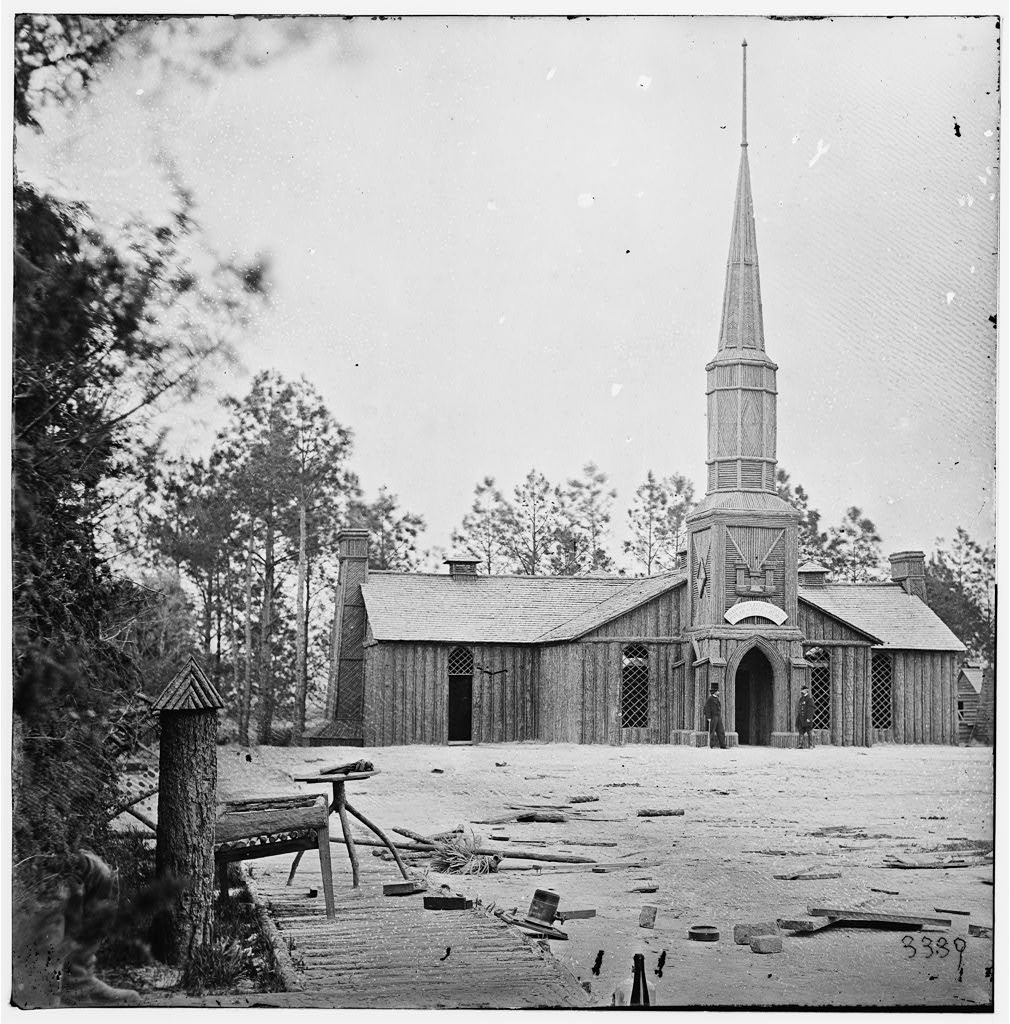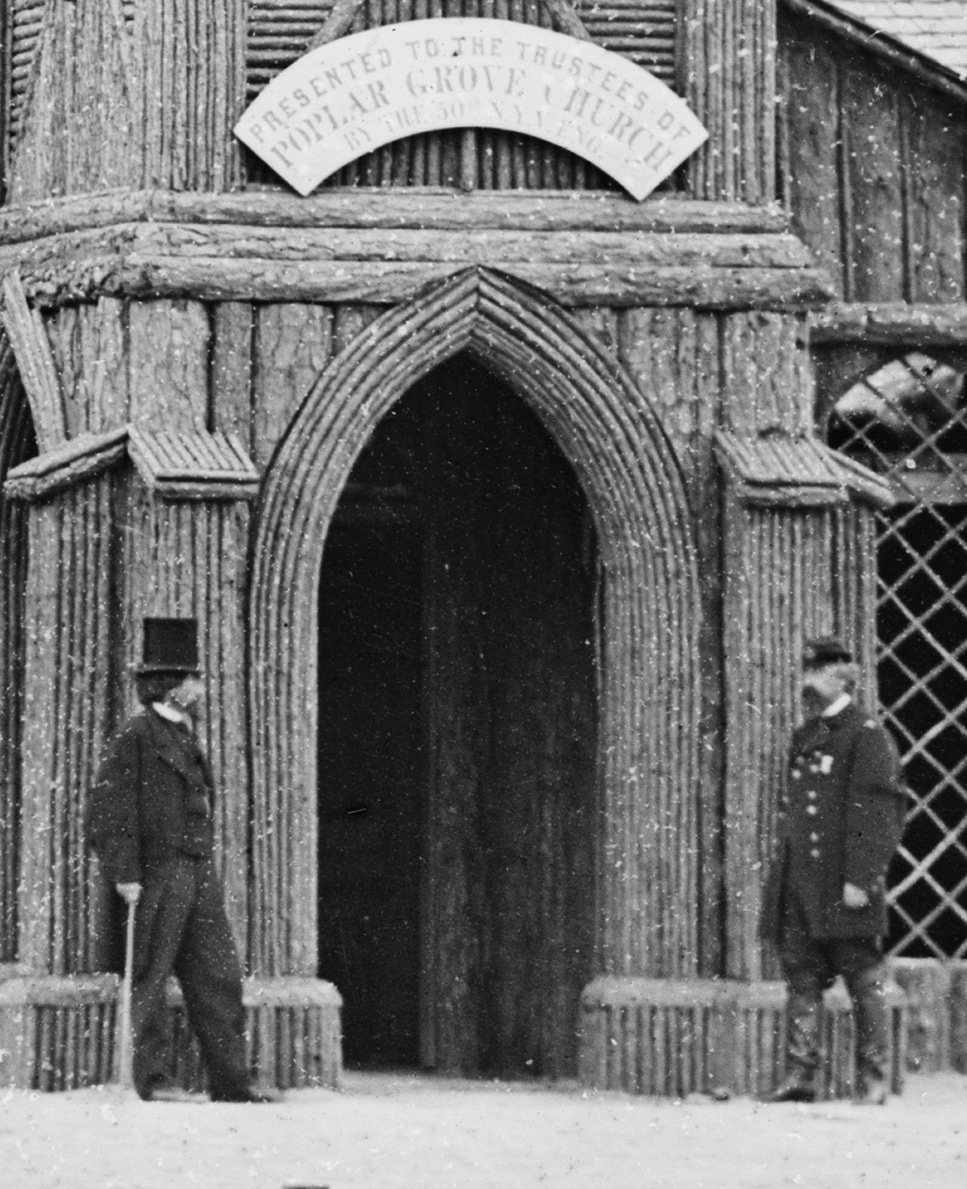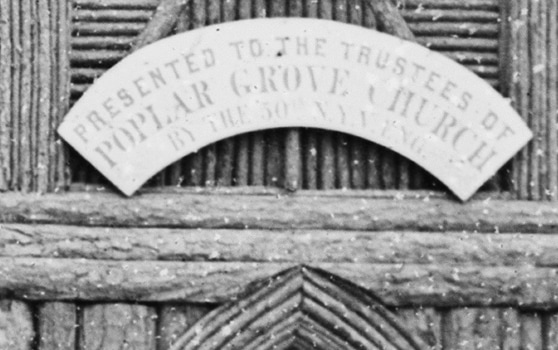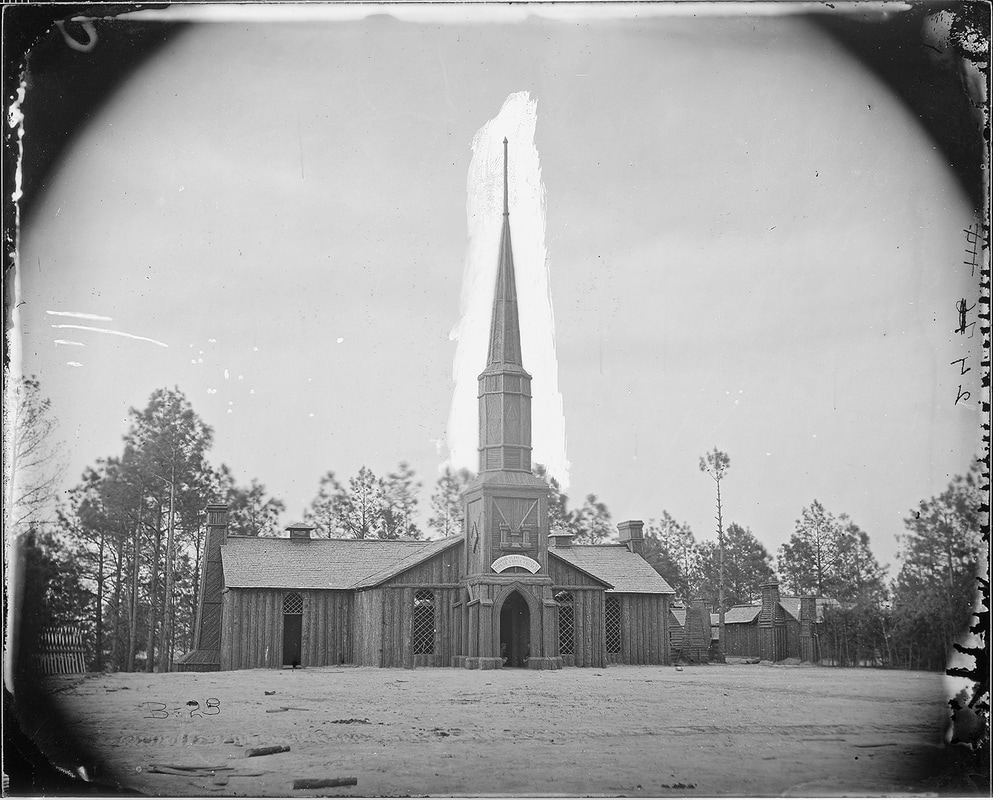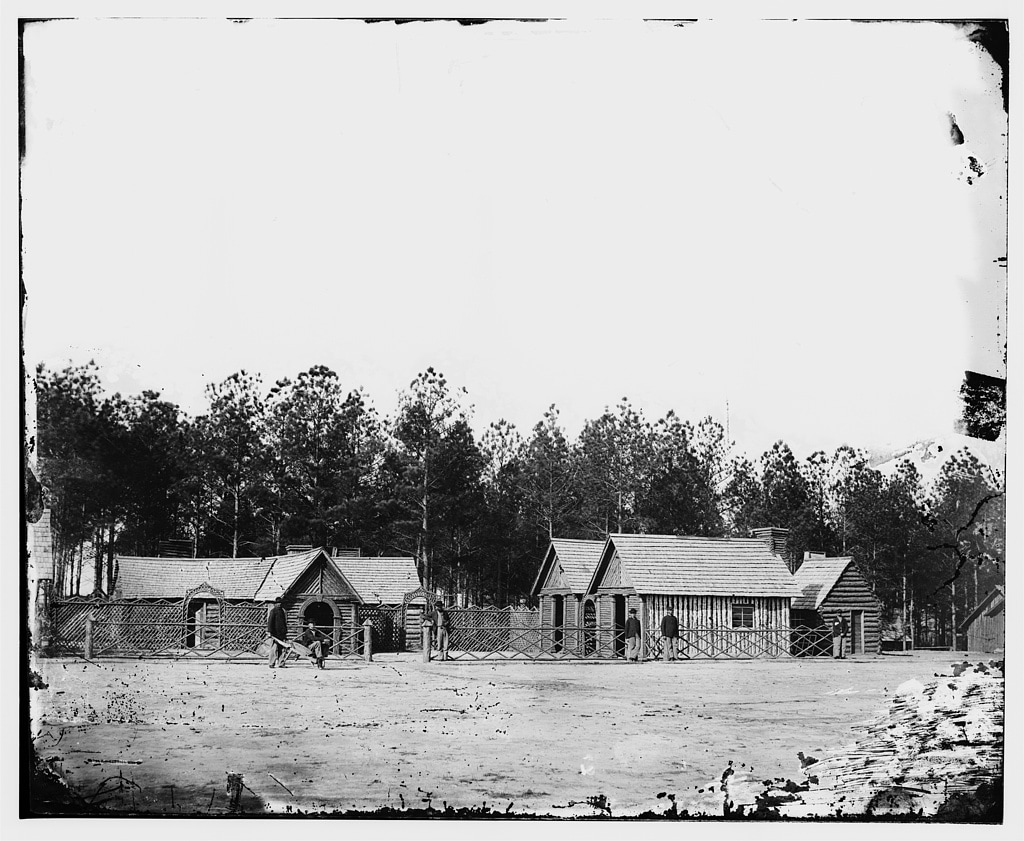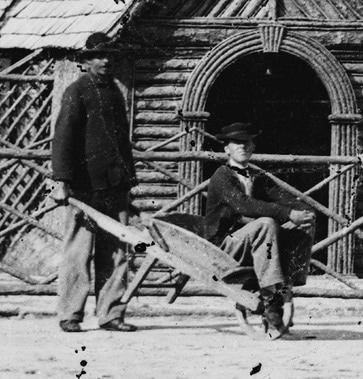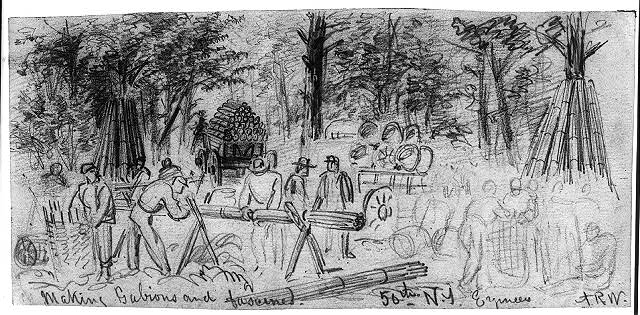Poplar Grove Headquarters of the 50th New York Engineers
In late October, 1864, following the fighting at Peebles and Pegrams Farms, two companies of the 50th New York Engineers (L & M) made a semi-permanent camp in a 5-acre field on the Flowers Farm near the site of Poplar Springs Church. The camp site was level and dry with nearby water, two-thirds mile west of the Weldon railroad and convenient to the Vaughan Road. The 50th New York Engineers were responsible for constructing and maintaining the field fortifications and roads on the left flank of the Army of the Potomac. Three other companies joined the encampment in early November. Captain William Folwell wrote in his diary that "some of the officers are putting up quite elaborate houses, more so than is worth while, I think. I shall be content with my tent until it is certain that the Army goes into winter quarters." Construction continued apace, however. A week later, Folwell reported "Capt. McGrath has built him a very snug house. I shall wait awhile before I begin mine.” In early December, he stated "this week we are to build quarters." On December 19th, Folwell reported "We have had a snug house built for the ‘darks’ and shall soon have our household in order. Our own house shall not build until after the men have finished their quarters upon which they are now at work. We shall have a very neat camp. I mean to have as good a house as can be built of the material accessible, viz., green pine timber and canvas. Here I stopped to go down in the street and see how the house building was getting on. The men are working very rapidly and skillfully. The cook-house is nearly complete, and is a fine one, 10 x 20 ft., with a fire-place clear across one end. As soon as the houses are done, I mean to have an oven made, and a well dug, and then we shall be ready for winter." At last, on January 19, he wrote: "The new house is nearly done. Our front room will be a beauty, 10 x 12 ft., with a fire-place and black walnut mantel piece. A pair of shelter tents stretched over the ridge pole and forming part of the roof make a capital skylight. Tomorrow will complete the main job."
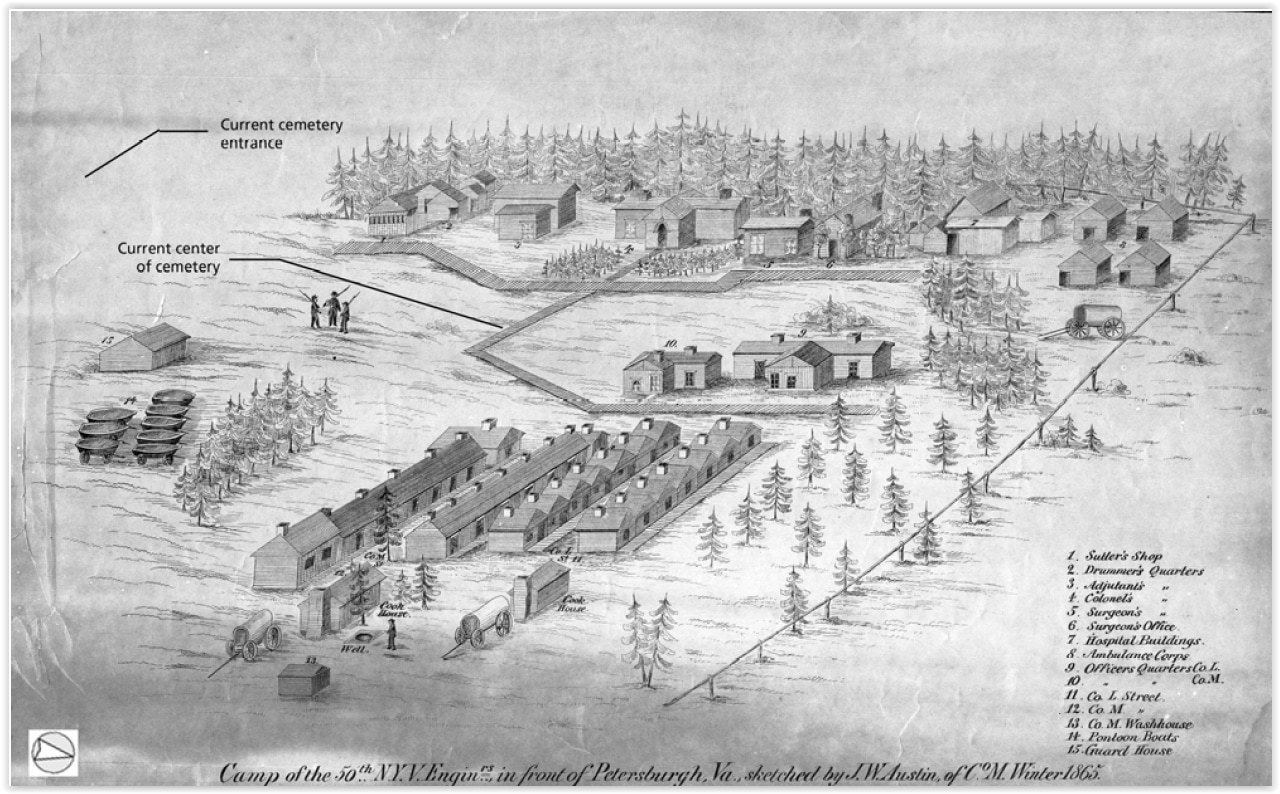 Perspective drawing of the engineers’ camp looking southwest toward Vaughan Road, probably
showing conditions in January 1865. The camp at the time was under improvement and additional buildings would
be added through the next few months. Virginia Historical Society, Richmond, Virginia, image 1999.161.535 (From Cultural Landscape Report For Poplar Grove National Cemetery, National Park Service 2009).
Perspective drawing of the engineers’ camp looking southwest toward Vaughan Road, probably
showing conditions in January 1865. The camp at the time was under improvement and additional buildings would
be added through the next few months. Virginia Historical Society, Richmond, Virginia, image 1999.161.535 (From Cultural Landscape Report For Poplar Grove National Cemetery, National Park Service 2009).
Poplar Spring Church
|
Colonel Ira Spaulding commanded the Regiment, Captain McGrath, the architect and builder of the Church. In front is a group of several of the officers of the Regiment. On the foreground stands the architect himself. One view of the Church also shows, on the left, the quarters, neatly and tastefully arranged, of the Regimental officers. -- Alexander Gardner, Sketchbook of the War, volume 2, plate 74.
|
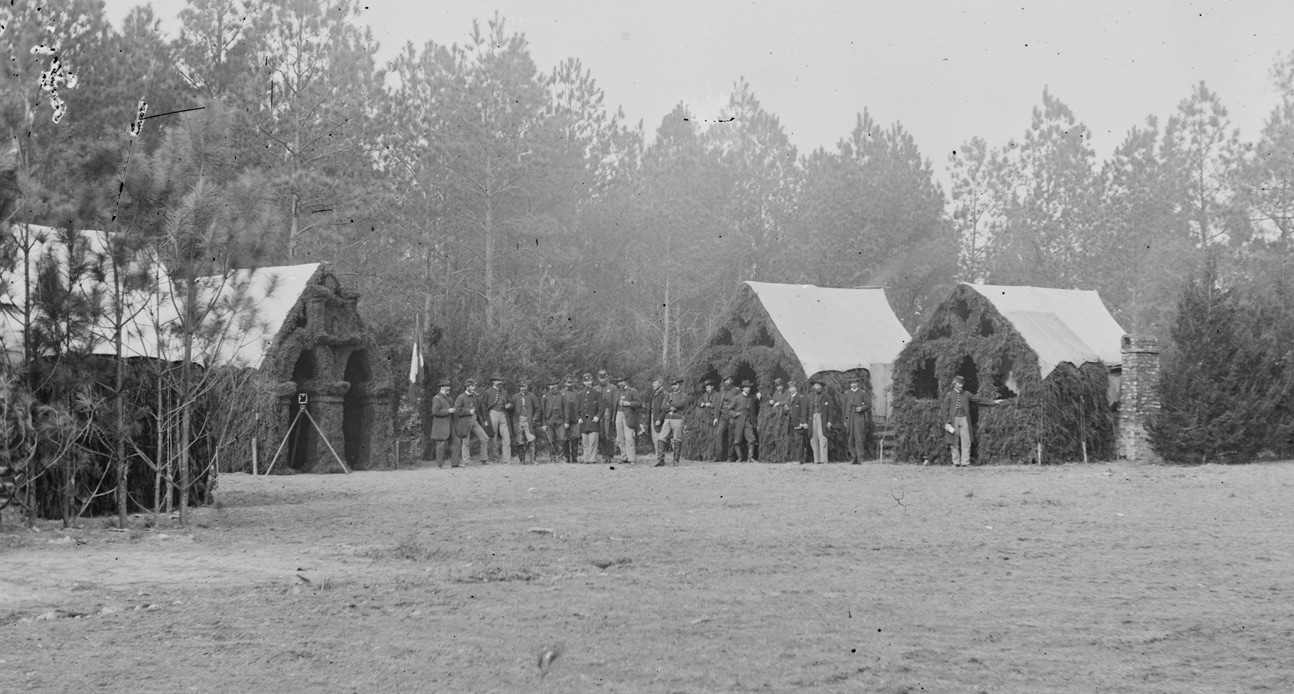
LC 00513. "Camp of 50th N.Y. Engineers in front of Petersburg, VA Field and Staff Officers' Quarters." Stereoscopic view likely by Timothy O'Sullivan (unattributed), winter 1864-1865. The hut on the left is fronted with the engineers' castle insignia; a theodolite on tripod stands before it. Cook fire smoke diffuses in the background.

LC 00512 detail. "Col. Ira Spaulding's quarters. Camp of the 50th New York Engineers." Stereograph likely by Timothy O'Sullivan (unattributed). Lt. Col. Ira Spaulding poses in the doorway of his headquarters with a theodolite. Emblem of the engineers is woven in evergreens above the doors. This is the leftmost hut in the above image (LC 00513) with its engineers' insignia.
"The Gothic, rustic-style church was designed by Brevet Major Michael H. McGrath, an architect-builder from Painted Post, New York, who commanded the engineer's Company F. McGrath designed the building in the plan of a modified cross, with a seating capacity for approximately 225 people. The entire structure was built of timber and featured a central tower with a spire that reached nearly sixty feet in height, shingled gable roofs with ridge ventilators, timber end chimneys, and vertical half-log walls. The main entrance, a Gothic-arched opening with recessed plank doors, was in the base of the tower, and four floor-length windows lined the facade, each with twig-lattice for muntins and cloth for glass.... At the front of the tower was the Corps of Engineers insignia executed in twigs." --Auwaerter, Cultural Landscape Report for Poplar Grove National Cemetery (2009), 25.
At least six images of the 50th New York Engineers' Church were taken on the same day by Timothy O'Sullivan
Steeple Shadow on the Roof. Time Sequence: LC 03720, 03886, 00108, 04329
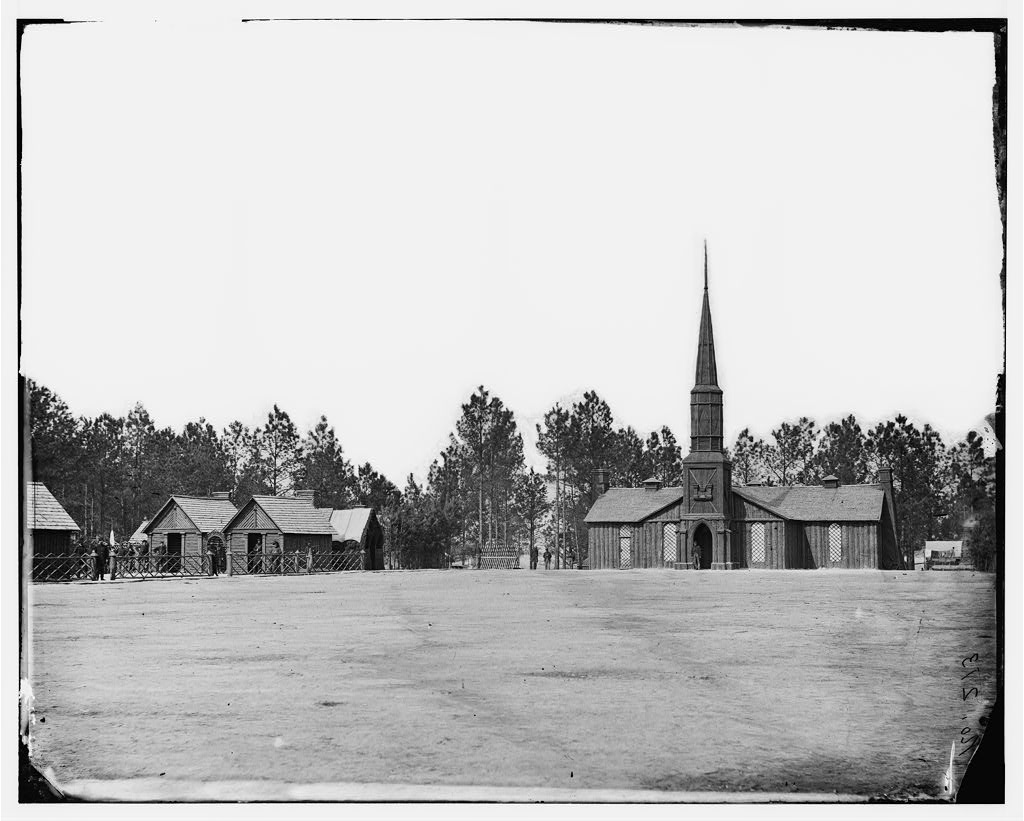
LC 03720. "Officers' quarters and church. Camp of 50th N.Y. Engineers in front of Petersburg, Va, March 1865." The CHURCH. This photograph is attributed to Timothy O'Sullivan. There are many interesting details in this image, beginning with the immaculately groomed parade ground. This large format photo was taken roughly at the same time as LC 00108 above.
Another series of O'Sullivan photographs taken after the camp was abandoned (April 1865?)
|
The present Church was used for the same purpose during the movements on the last of March, and 1st and 2d of April, 1865. The Regiment, upon moving away from its camp to take part in the pursuit of Lee's army, left a wooden tablet over the entrance to the Church, with these words inscribed upon it: "Presented to the Trustees of the Poplar Springs Church, by the Fiftieth Regiment New York Volunteer Engineers." Alexander Gardner, Sketchbook of the War, plate 74
|

